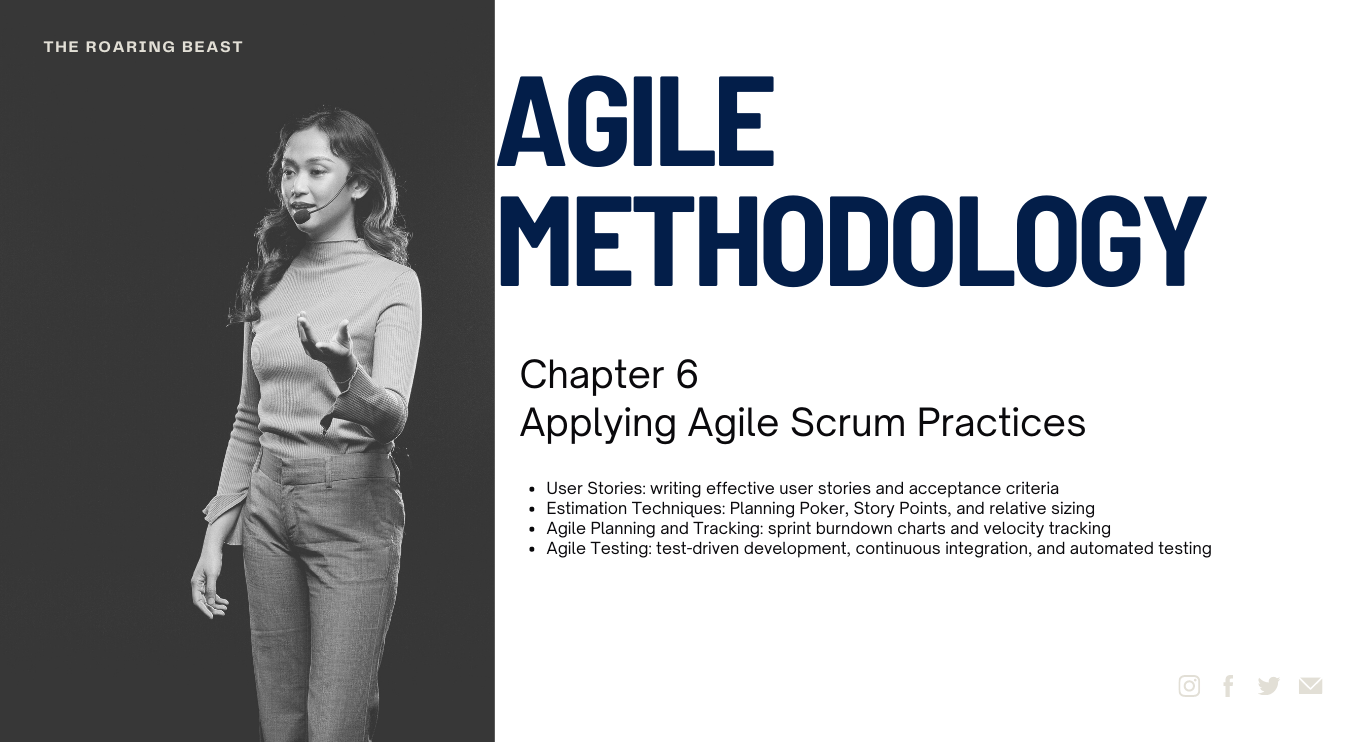Estimation techniques in Agile Scrum help the Scrum Team determine the effort required to complete user stories or product backlog items. Here are three commonly used estimation techniques: Planning Poker, Story Points, and relative sizing.
- Planning Poker:
- Planning Poker is a collaborative estimation technique that involves the entire Scrum Team, including the Product Owner, Scrum Master, and Development Team.
- Each team member receives a deck of Planning Poker cards, which typically have numbers representing the relative effort or complexity of a user story.
- The Product Owner reads a user story, and team members privately select a card that represents their estimation.
- After everyone has made their estimation, the cards are revealed simultaneously.
- Team members with high and low estimations explain their reasoning, facilitating a discussion to align the estimates.
- The process is repeated until a consensus is reached on the estimation.
- Planning Poker helps uncover different perspectives, fosters collaboration, and promotes shared understanding among team members.
- Story Points:
- Story Points are a relative unit of measurement used to estimate the effort required to complete a user story.
- The Scrum Team assigns story points to each user story based on its complexity, effort, and other factors.
- Story Points are typically represented using numbers like 1, 2, 3, 5, 8, 13, etc.
- The values assigned to story points are arbitrary and specific to each Scrum Team.
- Team members consider factors such as complexity, risk, uncertainty, and effort required to complete a user story when assigning story points.
- The relative nature of story points allows for easier comparison and prioritization of user stories.
- Over time, the team can establish a baseline and use historical data to predict the velocity, i.e., the number of story points they can complete in a given sprint.
- Relative Sizing:
- Relative Sizing is an estimation technique that compares user stories or backlog items against each other to determine their relative effort.
- The team uses a relative scale (e.g., t-shirt sizes: XS, S, M, L, XL) to express the size or effort of a user story.
- The focus is on comparing one user story to another, rather than assigning absolute values.
- Team members discuss and analyze the differences in complexity, effort, and risk between user stories to determine their relative sizing.
- Relative Sizing helps the team quickly prioritize and make high-level estimates without getting into specific numerical values.
- It is particularly useful during backlog refinement sessions or when faced with a large number of user stories.
These estimation techniques provide the Scrum Team with a shared understanding of the effort required for user stories. They promote collaboration, facilitate planning, and assist in determining the capacity of the Development Team for each sprint. The choice of technique may vary depending on the team’s preferences, the nature of the project, and the level of detail required for estimation.

